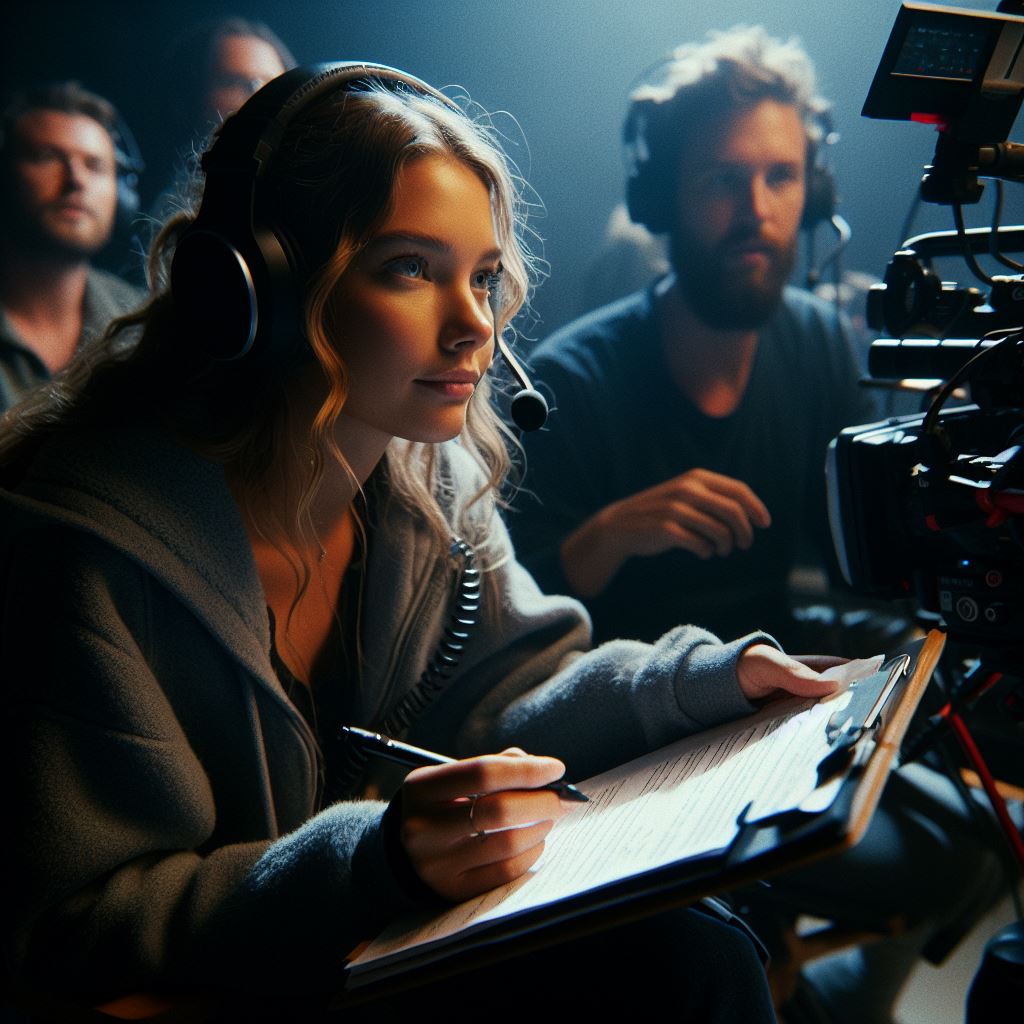Introduction
Acting techniques play a crucial role in the Australian context, shaping the country’s vibrant performing arts scene.
Imagine capturing the essence of iconic Australian actors like Cate Blanchett or Hugh Jackman through the lens of their unique acting techniques.
In Australia, acting techniques have a significant impact on the country’s rich and diverse performing arts scene. From theatre to film, these techniques shape the way actors approach their craft, elevating performances to new heights.
With a deep appreciation for storytelling, Australian actors have embraced various acting techniques to create authentic and captivating performances.
From Stanislavski’s method acting to Meisner’s emotional truth, these techniques provide actors with effective tools to bring characters to life.
The importance of acting techniques in the Australian context lies in nurturing a genuine connection between the actor and the audience.
By delving into characters’ motivations, emotions, and experiences, actors can deliver powerful and relatable performances that resonate with viewers.
Australian actors are known for their versatility and ability to embody a wide range of roles.
Through the exploration of techniques such as physicality, voice control, and improvisation, actors in Australia can adapt to diverse characters and dynamic narratives.
Moreover, acting techniques foster collaboration and ensemble work within the industry. Actors train together, exchanging ideas and pushing each other’s boundaries.
This collaborative spirit is vital in creating innovative and impactful productions, showcasing Australia’s unique artistic voice on both local and international stages.
In essence, acting techniques play a pivotal role in the Australian performing arts landscape, fueling creativity, authenticity, and connection.
As we delve into various techniques used by Australian actors, we will uncover the magic behind their captivating performances and the enduring impact they have on audiences worldwide.
Read: Music Production: A Guide for Aussies
Popular Acting Techniques in Australia
Method acting
- Originating from the teachings of Constantin Stanislavski, method acting emphasizes emotional truth and the use of personal experiences.
- Method acting has gained significant relevance and popularity among Australian actors due to its emphasis on authenticity.
- Successful Australian actors who have practiced method acting include Cate Blanchett, Hugh Jackman, and Heath Ledger.
Meisner technique
- The Meisner technique, developed by Sanford Meisner, focuses on truthful acting and the ability to respond instinctively.
- In Australia, the Meisner technique has had a significant impact on the acting scene, particularly in fostering genuine interactions between actors.
- Actors such as Nicole Kidman and Geoffrey Rush have given testimonials about the success they have found using the Meisner technique.
Stanislavski system
- The Stanislavski system emphasizes the use of emotional memory, objectives, and actions to create realistic and truthful performances.
- Australian acting schools and theaters have been greatly influenced by the Stanislavski system, which forms the basis of their training programs.
- Case studies of Australian actors, including Russell Crowe and Cate Blanchett, demonstrate the benefits they have gained from applying the Stanislavski system.
Overall, method acting, the Meisner technique, and the Stanislavski system are popular and effective acting techniques in Australia.
These techniques have found success among Australian actors and have significantly influenced the acting scene in the country.
Whether it’s the emphasis on emotional truth and personal experiences in method acting, the instinctive responses and genuine interactions in the Meisner technique.
Or the use of emotional memory and objectives in the Stanislavski system, these techniques have shaped the performances of Australian actors and contributed to the growth of the acting industry in Australia.
Read: Australian Music Awards: A Closer Look
Explore Further: Essential Gear for Aussie Photographers
Alternative Acting Techniques in Australia
In Australia, alternative acting techniques have gained significant recognition and prominence in the industry.
This section focuses on three specific techniques: improvisation and physical theater, voice and speech techniques, and Indigenous performance traditions.
Improvisation and physical theater
- Introduction to the concept of improvisation and its significance in Australian acting.
- Exploration of the relationship between physical theater and improvisation in Australia.
- Examples of successful improvisational actors in the Australian industry.
Improvisation, a key aspect of Australian acting, allows actors to think on their feet and respond intuitively to the given circumstances.
It encourages spontaneity and creativity, enabling actors to fully immerse themselves in their characters. This technique has become highly significant in Australian acting, as it creates authentic and engaging performances.
Physical theater, closely linked to improvisation, emphasizes the body as a means of communication.
Australian actors have embraced physical theater to convey emotions, tell stories, and express complex ideas through movement, gestures, and facial expressions. Physical theater adds depth and visual impact to performances, making them compelling and memorable.
Your Personalized Career Strategy
Unlock your potential with tailored career consulting. Get clear, actionable steps designed for your success. Start now!
Get StartedNumerous Australian actors have successfully utilized improvisation in their craft.
Notable performers like Cate Blanchett, Geoffrey Rush, and Hugo Weaving have incorporated improvisational skills in their work, adding spontaneity and uniqueness to their performances.
Voice and speech techniques
- Discussion of different voice and speech methodologies used in Australia.
- Analysis of the importance of clear communication and vocal training for Australian actors.
- Interviews with voice coaches and actors highlighting the benefits of specific techniques.
In Australia, the significance of clear communication and vocal training is widely recognized in the acting industry.
Different methodologies are employed to enhance an actor’s voice and speech, ensuring they effectively convey their character’s emotions and intentions.
Various techniques, such as the Linklater method and the Lessac method, aim to improve vocal range, articulation, projection, and resonance.
These methodologies equip actors with the necessary tools to captivate audiences and deliver powerful performances.
Incorporating specific techniques like accent training helps actors portray characters authentically, particularly in productions that require diverse accents.
To shed light on the importance of voice and speech techniques, interviews with voice coaches and actors can provide valuable insights.
These professionals can discuss their experiences and share the benefits they have gained from utilizing specific techniques, emphasizing the positive impact on their performances and career development.
Indigenous performance traditions
- Overview of the unique storytelling and performance methods of Indigenous Australians.
- Recognition of the growing appreciation and integration of Indigenous performance techniques.
- Examples of successful actors who have engaged with Indigenous performance traditions.
Indigenous Australians have long practiced unique storytelling and performance methods, deeply rooted in their cultural heritage.
These traditions involve oral storytelling, dance, song, and ceremonial rituals, contributing to a rich and vibrant performing arts landscape in Australia.
In recent years, there has been a growing appreciation and integration of Indigenous performance techniques within the mainstream industry.
Australian actors, such as David Gulpilil and Deborah Mailman, have embraced Indigenous traditions and incorporated them into their work.
This recognition not only celebrates the cultural significance of Indigenous storytelling but also enriches the diversification and authenticity of Australian performances.
Essentially, alternative acting techniques have become integral to the Australian acting industry.
Improvisation and physical theater enable actors to think spontaneously and express themselves physically, while voice and speech techniques enhance their communication skills.
The integration of Indigenous performance traditions adds depth and cultural richness to the Australian performing arts scene.
By embracing these alternative techniques, actors can create more compelling and authentic performances, contributing to the ongoing evolution of Australian theater and film.
Read: Building a Music Career in Australia

Delve into the Subject: Freelance Writing in Australia: Tips & Tricks
Choosing the Right Acting Technique
Consideration of Individual Acting Styles and Preferences
When it comes to choosing the right acting technique, it is crucial to consider your individual acting style and preferences.
- Start by analyzing your strengths and weaknesses as an actor. This self-awareness will help you identify techniques that align with your abilities.
- Reflect on past acting experiences and determine the methodologies that have worked well for you.
- Consider the genres and types of roles you aspire to perform. Different techniques may be more suitable for specific acting styles.
- Research and familiarize yourself with various acting techniques such as Stanislavski’s Method, Meisner Technique, and the Williamson Technique.
- Attend theater productions and observe actors who excel in the techniques you are interested in.
- Experiment with different techniques during workshops or acting classes to gain firsthand experience and insight into what resonates with you.
Importance of Training and Experimentation to Discover the Most Effective Technique
Training and experimentation are essential to discovering the most effective acting technique for you.
- Enroll in reputable acting schools or programs that offer comprehensive training in various techniques.
- Actively participate in scene work, monologue exercises, and improvisation to test different techniques and refine your skills.
- Explore workshops and intensive programs that focus on specific techniques to deepen your understanding and proficiency.
- Collaborate with other actors and engage in scene study groups to exchange ideas and experiences with different techniques.
- Film and analyze your performances to identify the techniques that yield the most authentic and compelling portrayals.
- Embrace failure and learn from it. Not every technique will work for every actor, so be open to trying new approaches.
Advice on Seeking Guidance from Acting Coaches and Mentors
Seeking guidance from acting coaches and mentors can greatly aid in the process of choosing the right technique.
- Find reputable acting coaches who are experienced in teaching a variety of techniques
- Seek recommendations from trusted actors or industry professionals who have successfully navigated their acting careers.
- Look for mentors who can provide personalized guidance and support in discovering the technique that suits you best.
- Actively participate in classes and workshops led by these experts to receive valuable feedback and insights.
- Create a strong mentor-mentee relationship that allows for ongoing guidance and development throughout your acting journey.
- Attend industry events and networking opportunities to meet experienced actors who can share their wisdom and advice.
Overall, choosing the right acting technique requires careful consideration of your individual acting style, training, and experimentation, as well as seeking guidance from experienced coaches and mentors.
By exploring different techniques and remaining open to growth and learning, you can discover the most effective approach to elevate your acting skills and achieve success in the Australian acting industry.
Read: The Evolution of Australian Music Genres
Stand Out with a Resume That Gets Results
Your career is worth more than a generic template. Let us craft a resume and cover letter that showcase your unique strengths and help you secure that dream job.
Get HiredConclusion
Let’s revisit the pivotal insights discussed in this exploration of acting techniques in Australia.
We’ve underscored the undeniable significance of embracing diverse methods within the dynamic realm of Australian acting.
Beyond traditional approaches, actors are encouraged to delve into a multitude of techniques, enriching their craft and expanding their artistic repertoire.
As we conclude, it is paramount to recognize the evolving nature of acting methodologies within the Australian context.
The performing arts landscape in Australia is ever-changing, mirroring global trends while also embracing unique nuances.
This dynamic environment calls for actors to remain adaptable and open-minded, welcoming the continuous evolution of acting techniques.
In a world where the only constant is change, the ability to explore and integrate diverse acting techniques becomes a cornerstone of success for actors navigating the Australian stage and screen.
Embrace this diversity, and let it be the driving force propelling you toward a fulfilling and impactful acting career in the vibrant landscape of Australian entertainment.




